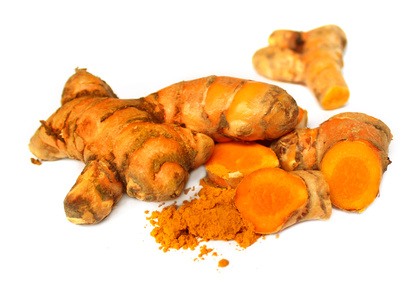Last week I posted about the benefits of turmeric and our recipe for golden paste. Find it here. Since then I’ve had a few questions regarding rumors followers have heard about the safety of this spice. So, I’ve done my research and decided to do another post answering these questions and getting to the bottom of some turmeric facts and myths!
Turmeric fact or fiction?
Statement: Turmeric does not interact with any medications.
Hate to start on a negative, but this is a very important one! Although it is generally very safe, it may slow blood clotting. It should not be taken in large doses alongside medications that do the same. These include aspirin, clopidogrel (Plavix), diclofenac (Voltaren, Cataflam, others), ibuprofen (Advil, Motrin, others), naproxen (Anaprox, Naprosyn, others), dalteparin (Fragmin), enoxaparin (Lovenox), heparin, warfarin (Coumadin), and others. Also, those preparing for surgery would be best off avoiding large doses for about a week beforehand.
Statement: Turmeric is a natural anti-inflammatory.
This is undoubted, a Turmeric fact. Turmeric contains curcumin. Read more about this powerful anti-inflammatory here.
Statement: Pregnant women should not consume turmeric.
Interestingly, this is a bit of both. High levels found in supplements should be avoided. This is due to the risk of it stimulating the uterus, possibly leading to a miscarriage. However, in the small amounts you would find in food, not only is it generally considered safe but may be beneficial due to its many positive effects.
Statement: Turmeric causes kidney stones.
Again, this is a little bit of turmeric fact but it’s important to break it down as it’s not quite as simple as that! It’s all about oxalates. Oxawhatnows??? I hear you ask. Well, oxalates are substances that are naturally occurring in a variety of foods. We need them for certain metabolism-related reactions in the body. We not only consume oxalates but also create them. Foods high in this substance include rhubarb, chocolate, spinach, almonds, cashews, and more! Some people tend to absorb more via the intestines than others which can cause an over-accumulation in the body. This causes more to be excreted which, combined with high urinary calcium content increases the risk of calcium oxalate kidney stones (just one of a few forms).
This is not the same for everyone. For starters, only soluble oxalates get absorbed in the body. Secondly, the healthy bacteria in your intestines break down oxalates, and thirdly it is only recommended that those who are already prone to kidney stones should limit their intake to no more than 50mg of oxalates per day.
The study:
The concern was raised by a study that was done called “Effect of cinnamon and turmeric on urinary oxalates excretion, plasma lipids and plasma glucose in healthy subjects”. For this study, they used 11 healthy individuals. For 4 weeks they consumed either 3mg of cinnamon or 2.8g of turmeric (about 1.3 tsp). Cinnamon, due to its high calcium content, provided only 6% soluble oxalates whereas turmeric provided 91%. They monitored levels excreted via urine and found that within 6hrs the absorption was 8.2% for turmeric and 2.6% for cinnamon. Hyperoxaluria is when urinary oxalate excretion is 40mg. At 24.9mg, turmeric was below the cut-off.
However, due to the 6-hour absorption rate being significantly higher in turmeric than in cinnamon, the researchers suggested it could increase the risk of developing kidney stones.
Conclusion:
So, the bottom line is this. . . If you are at high risk for kidney stones, then yes, high levels of turmeric powder may increase your risk factor particularly if you are eating other foods high in oxalates. However, the standard dietary amount of 1tsp, a day is likely to be completely safe for most people. For example, my sleepy tea recipe uses 3tbsp of paste. However, this is for 5 servings which, by the time you have taken into account the other ingredients in the paste, amounts to approximately 1tsp turmeric per serving.
Keep in mind that not only did they give closer to 1.5tsp a day, which is more than the standard intake, but they also gave over the recommended daily limit of 50mg oxalates per day and the excretion level was still below the cut-off.
It is also worth noting that many curcumin supplements contain lower amounts of oxalates than pure spice.
So that’s the lot for now. Just as with all good things Natural or otherwise, more is not always better. . . Let’s face it, chocolate is a great antioxidant but sit and eat a few kilos and your probably not going to feel all that great!
Of course, if you think of anything I haven’t covered, just let me know and I’ll add it in!
Don’t forget to follow us on Instagram and Facebook to keep up to date with all our latest offers, recipes, and health news!
